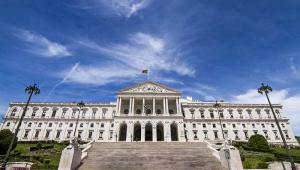By Nick Mann | 3 January 2013
The US must do more to put its public finances back on a sustainable path without harming its economic recovery, according to the International Monetary Fund.
Gerry Rice, director of external relations at the IMF, welcomed the deal reached by Congress in the early hours of Tuesday, which avoided the ‘fiscal cliff’ combination of tax increases and spending cuts due to take effect on January 1. Without this, the US economy recovery would have been ‘derailed’, he said.
But now US politicians needed to agree a ‘comprehensive plan’ to ensure both higher revenues and the containment of ‘entitlement spending’ – government spending on areas such as social security – in the medium term. Rice called for this plan to be approved ‘as soon as possible’.
He also urged action to increase the US’s borrowing limit when it reaches its debt ceiling. Analysts expect this to happen in late February or early March, raising concerns of a repeat of the political brinkmanship when the debt ceiling was reached in August 2011 that created market fears of a US default.
‘It is crucial to raise the debt ceiling expeditiously and remove remaining uncertainties about the spending sequester and expiring appropriation bills,’ Rice said.
Following the fiscal cliff deal, ratings agency Moody’s noted the potential for the political negotiations on the debt ceiling to clash with those on spending cuts. Yesterday’s agreement simply delayed the automatic spending cuts in the fiscal cliff by two months.
‘Although Moody's believes that the debt limit will eventually be raised and that the risk of default on Treasury bonds is extremely low, this confluence of events adds uncertainty to the outcome of negotiations,’ it said in a note.
Further action to reduce future US budget deficits would be needed for Moody’s to improve its negative outlook on the US’s triple-A rating, it warned. But the ‘debt trajectory’ could lead to the US being downgraded instead.













